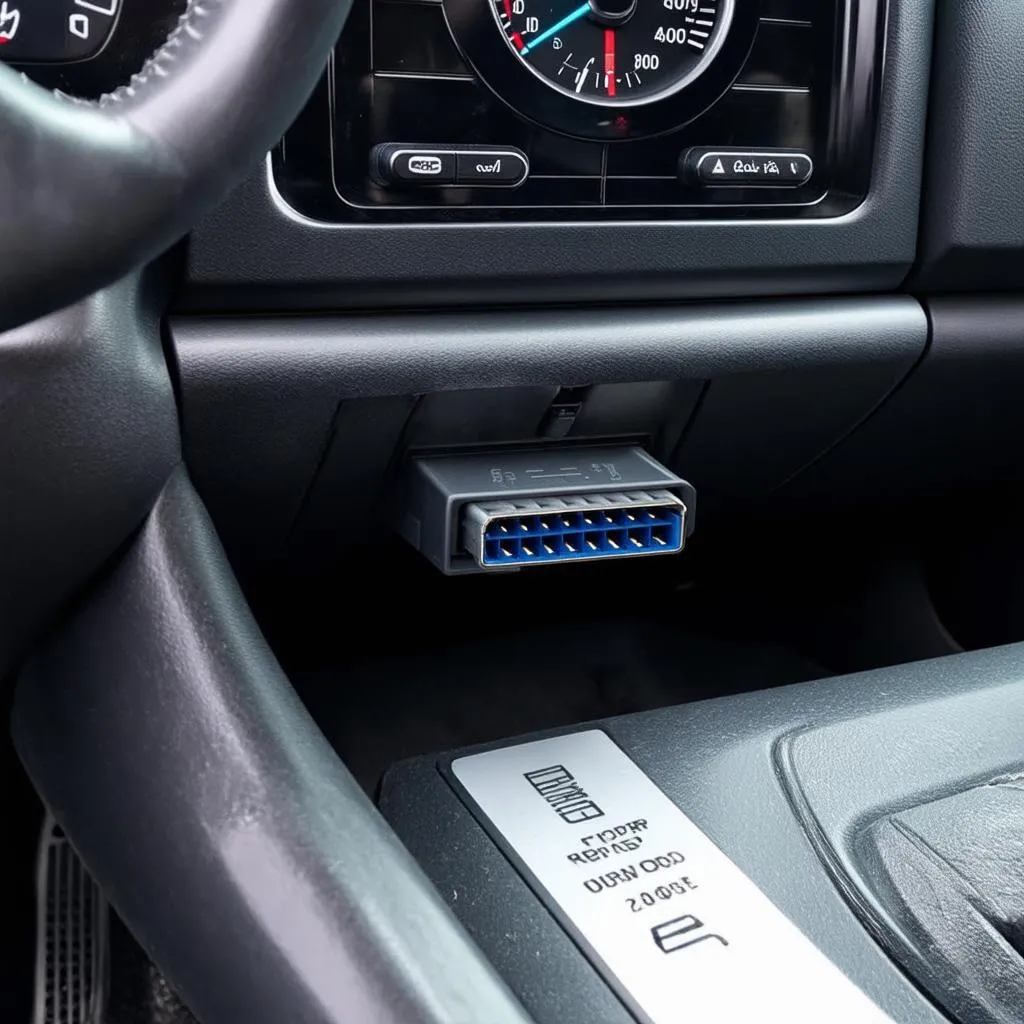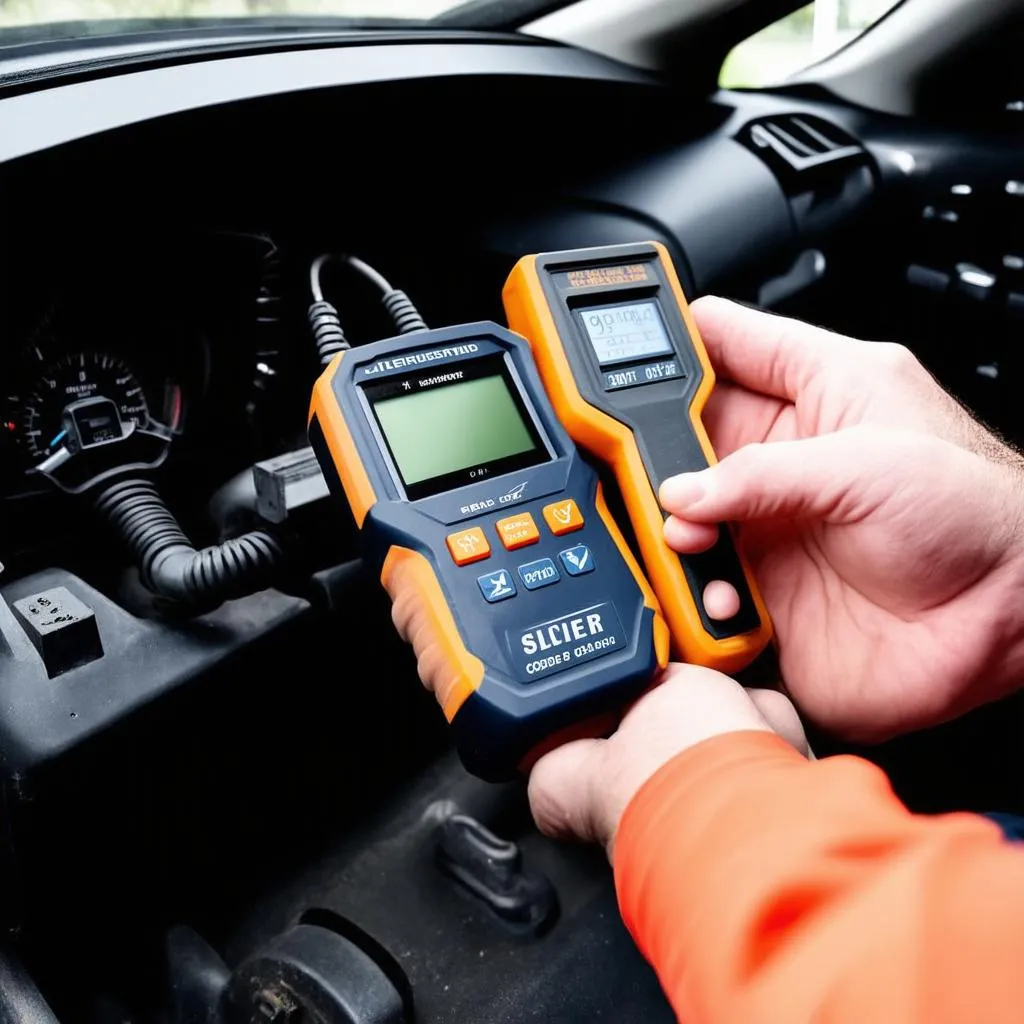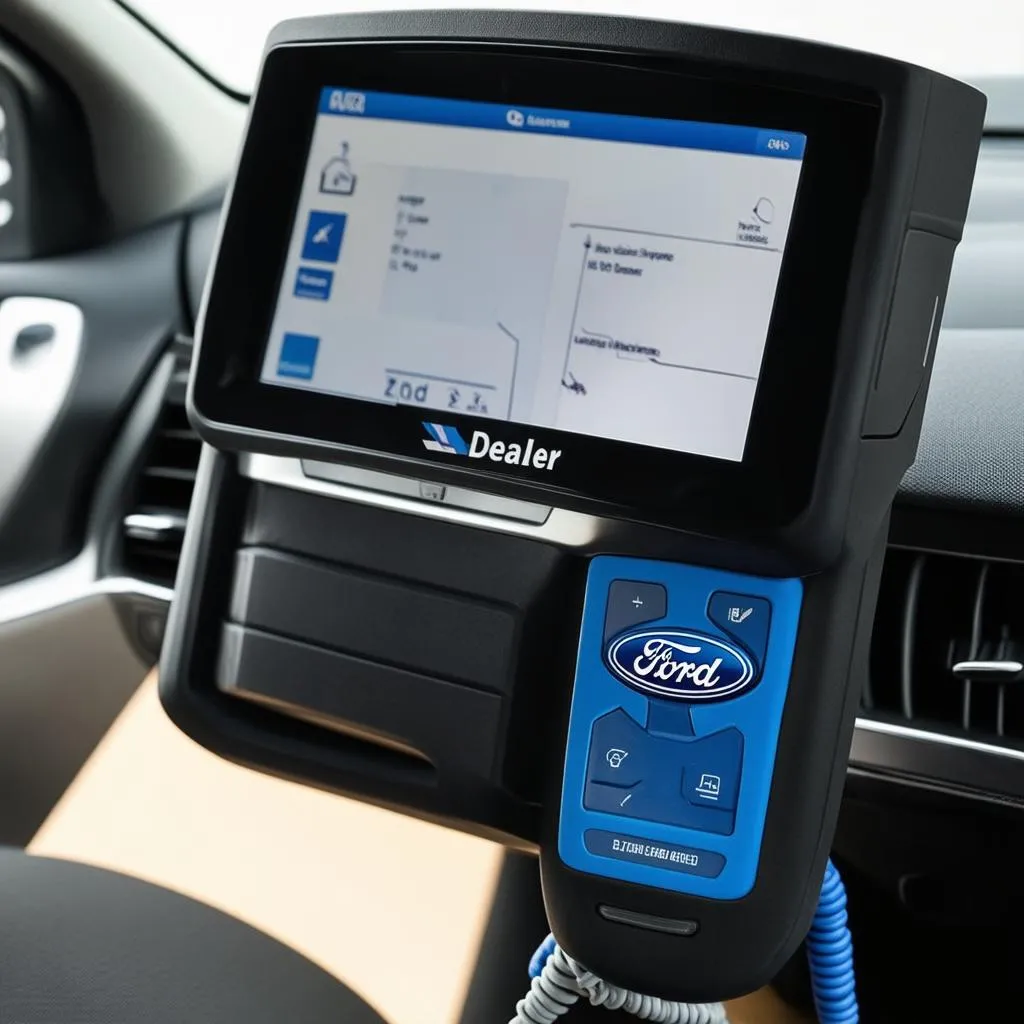Have you ever been stuck on the side of the road, wondering where the OBD port is on your 2010 Ford Explorer? It’s a frustrating experience, but it doesn’t have to be! Knowing where to find your OBD port can save you time and hassle in the long run.
Understanding the OBD Port
The OBD port, also known as the “On-Board Diagnostics” port, is a vital component of your vehicle’s electrical system. It allows mechanics, technicians, and even yourself to diagnose and troubleshoot potential problems with your car.
Why is the OBD Port so important?
- Diagnostic Power: The OBD port serves as a gateway for diagnostic tools to access your car’s computer system.
- Problem Solving: If your car is acting up, a simple check with a diagnostic tool can help pinpoint the issue, saving you time and money.
- DIY Repairs: For the mechanically inclined, the OBD port opens a world of DIY repair possibilities.
Finding the OBD Port on Your 2010 Ford Explorer
The OBD port on your 2010 Ford Explorer is conveniently located under the dashboard, on the driver’s side. You’ll find it near the steering column, tucked away under the dash.
Here’s a step-by-step guide:
- Get in Your Car: Make sure your car is parked securely and your engine is off.
- Locate the Steering Column: Look under the dashboard on the driver’s side, near the steering wheel.
- Look for a 16-Pin Connector: The OBD port is a rectangular connector with 16 pins. It’s typically black or gray in color.
Pro Tip: If you’re still struggling to find it, try looking near the fuse box or the parking brake.
Common Questions About the 2010 Ford Explorer OBD Port
What is a Diagnostic Tool?
A diagnostic tool is a device that connects to your car’s OBD port and allows you to read error codes, monitor live data, and even clear trouble codes.
What can I do with a Diagnostic Tool?
- Read and Clear Trouble Codes: Diagnostic tools can help you understand the underlying cause of any warning lights or engine issues.
- Monitor Live Data: You can track real-time information like engine speed, fuel pressure, and more.
- Reset Check Engine Light: If your check engine light is on, you can often clear the codes with a diagnostic tool.
What are the Different Types of Diagnostic Tools?
- Generic Scanners: These are more affordable and can read basic trouble codes.
- Advanced Scanners: These scanners offer more features and can access a wider range of data, including live data streams.
- Dealer Scanners: These are professional-grade scanners used by car dealerships to diagnose and repair vehicles.
Can I Use a Dealer Scanner on my 2010 Ford Explorer?
Yes! Dealer scanners can work on a wide range of vehicles, including European cars. They offer advanced diagnostics and can be used to perform more complex repairs.
The Power of the OBD Port: A Story of Discovery
A mechanic named John was working on a 2010 Ford Explorer that had been giving the owner headaches for months. The check engine light was on, but the owner couldn’t figure out what was wrong. John decided to use his dealer scanner to diagnose the problem. He quickly discovered that the issue was a faulty oxygen sensor. By replacing the faulty sensor, the car ran smoothly again.
Final Thoughts
The 2010 Ford Explorer OBD port is a valuable tool for car owners, mechanics, and technicians alike. It’s a gateway to understanding your vehicle’s health and helps to keep your car running smoothly.
Need help with your 2010 Ford Explorer?
Don’t hesitate to reach out! We have a team of experts ready to assist you 24/7. Contact us via WhatsApp: +84767531508.
For more information on car diagnostics and repairs, check out our other articles:
Share this article with your friends and family!
 obd port on a 2010 ford explorer
obd port on a 2010 ford explorer
 professional diagnostic tool
professional diagnostic tool
 ford dealer scanner
ford dealer scanner